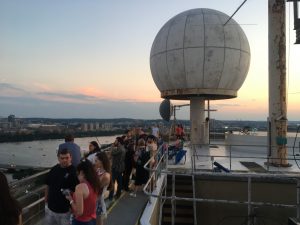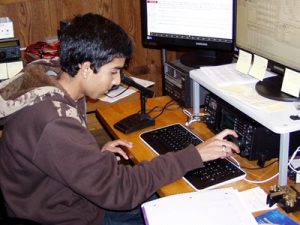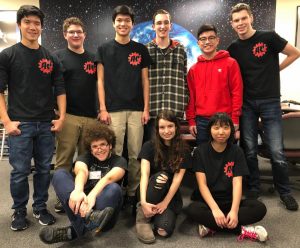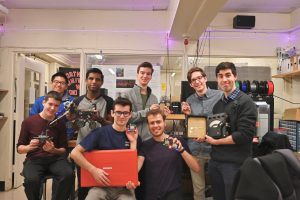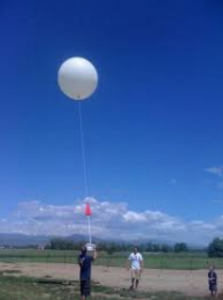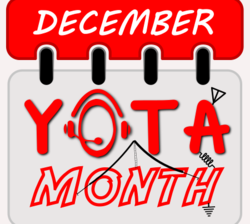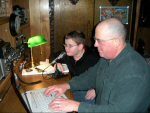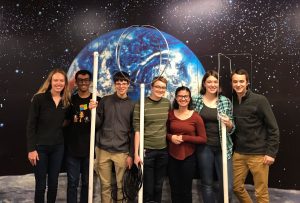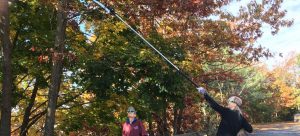 Charlie Bures, WA3ITR, writes in the Wellesley ARS “The Sparkgap” November, 2019 newsletter:
Charlie Bures, WA3ITR, writes in the Wellesley ARS “The Sparkgap” November, 2019 newsletter:
As part of the new collaboration between WARS (Wellesley Amateur Radio Society) and NEST (New England Sci-Tech in Natick), Charlie has proposed a NEST High Altitude Balloon (HAB) project.
What are the goals?
NEST mission is to help youth with STEM projects. As you recall, Charlie has previously done balloon launches with Natick HS and now, he is leading this new effort for NEST.
The goals are to get young people involved in a project, which has Amateur radio (an APRS tracker device) with STEM learning. They will learn about project planning, platform testing, launching, tracking, and recovery of the balloon and its payload, and flight data analysis. The platform will carry up to 3 GoPro cameras, a commercial GPS tracker, and the APRS tracker. A 20-foot tether connects the platform to the HAB balloon, which is filled with helium or hydrogen, and is about 8 feet in diameter at launch. The platform will weigh less than 4 pounds.
As the balloon ascends, the APRS tracker will provide location info, pressure, temperature, altitude and a few more items in its telemetry. At around 90,000 feet after a 2-3 hour ascent, the balloon will have expanded to over 30 feet in diameter when it explodes and the package starts its return to earth.
The parachute will deploy and the downward trip will take 30-45 minutes. Hopefully it will not land on a roof, pond, or the Mass Pike!! It needs to be recovered to collect the photos from the cameras. The STEM team will write a report on the whole project.
Proposed Budget
Here is a breakdown of the expected cost of an HAB. The kit is obtained from High Altitude Science (https://www.highaltitudescience.com/) who has perfected the items for a youth team, supervised by adults (if you can call Charlie an adult!)
1. HAB kit – $ 750
2. Extra balloon $ 30
3. Helium or Hydrogen $ 150
4. 3 GoPro like cameras $ 150
5. APRS tracker $ 250
6. Batteries $ 25
TOTAL: $ 1355 (approximate)
Of course, subsequent flights can be done more cheaply if the platform is recovered successfully. Then, you just need a new balloon and more helium!
Timeline
The project flyer is being designed and advertising to students will begin in late November through the end of the year. To give you a feeling of the project, here is a rough schedule as to the project activities:
1. November – Create flyer and start advertising
2. December – Sign up and order kit
3. January – start meetings, which are 2x/month at NEST
4. Late Feb/March – start assembly of the kit
5. March/April – flight planning and launch prep
6. May – tethered test prior to launch to ensure all systems are go
7. Late may – launch (likely from central or western MA)
8. June – data analysis and write report
The idea is not only to learn and have fun, but also to analyze the results and decide how the next flight should be done. For instance, radiation devices could be used or, perhaps, amateur live streaming of the flight and balloon burst could be added to future flights.
How you can help
I’d like to ask for your support in two ways. First, if there is anyone who would like to be involved in the meetings to learn, build, and assemble this platform, please let me know what you’d like to do. Second, I’d be grateful for any private donations of any amount or any general support of WARS. I know there are lots of worthy causes for your charity contributions, and I hope you can see the value of this STEM project for youth learning about ham radio and be able to offer some support – THANK YOU!
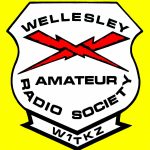 The Wellesley Amateur Radio Society will meet on February 18, 2020 at 7:30 PM. Charlie Bures, WA3ITR, will present on his new program called “Your Project in Space” for teens.
The Wellesley Amateur Radio Society will meet on February 18, 2020 at 7:30 PM. Charlie Bures, WA3ITR, will present on his new program called “Your Project in Space” for teens. 


